There are over 1200 NHS hospitals across the UK, spread across 223 NHS trusts, ranging in age and complexity. Very few of them are single stand-alone buildings, instead the sites usually represent complicated infrastructure networks, that have grown and developed over a few decades. This in turn increases the complexity of the fire detection system across the whole site.
The challenges in managing fire detection system in such structures can be associated with:

- Cost of ownership:
- Management of aging system and replacement components availability.
- Contracts locked to a single supplier of the fire protection services.
- Structural challenges:
- Management of different detection systems within one hospital.
- Management of works and renovations in the hospital, while ensuring uninterrupted fire safety.
- Protection of temporary structures.
- Maintenance of challenging wards that do not allow for interruption of services.
- Management of full or partial fire system upgrades.
- Evacuation and fire strategy:
- Buildings cannot be fully evacuated.
- Complex fire safety strategies employed.
- Fire spread information is routinely used.
- System performance issues within specific environments:
- False alarms.
- HPV cleaning.
- COVID-19 nebulising spray.
- Contingency wards protection.
Cost of ownership
Many of the challenges associated with the management of an aging system and immutable maintenance contracts could quite often have been avoided if the new sites were delivered with consideration for future building evolution, system lifecycle and the total cost of ownership.
Fire detection equipment is generally expected to last 10 years (FIA guidance on the life expectancy of a fire detection & alarm system issue 1). However, the same equipment will often remain in place for up to 25 years. In a national survey carried out with healthcare fire officers, 50% of respondents described their system as between 10-20 years old, with a further 13% saying it was over 20 years old. Old systems tend to be difficult to manage due to reduced system reliability. Varied faults can cause false alarms and unnecessary disruption to hospital operation, and this can result in fines. The biggest issues come when the system cannot be maintained any longer due to component obsolescence or due to becoming unsupported by the manufacturer.

A system renovation often only replaces sections of the system. Equipment such as detector heads and the control panel are likely to be replaced only if proven to be troublesome or prone to false alarms. Ideally the fire detection system will have forward and backwards compatibility meaning that a modern control panel can replace the ageing one without changing the detectors and modern higher reliability detectors can be used in the current control panel to address false alarms. Thus, areas of the system can be updated and will work seamlessly with the original system. This gives the ability to manage specific issues and to be able to renovate the system in phases, spreading the cost and minimising disruption. It also ensures that even if some components have been made obsolete, there is a modern replacement available, that will work reliably on the old infrastructure. Otherwise, it is possible that the whole system will require a full and immediate overhaul due to an unforeseen component obsolescence or non-compliance.
The cost and complexity of renovation itself can vary dramatically depending on the type of system installed. Some NHS sites in the past have experienced very high cost of ownership for closed protocol systems. Closed protocol can be described as a system where only a single supplier of installation and maintenance services is authorised to work with the fire system. The ownership of systems like this means that the building owner is locked into a contract and the only way out is a full system replacement. The cost of replacement usually deters end users from changing a manufacturer and therefore they usually don’t have a choice but to carry on managing a system that is expensive to run and limited in choice of service suppliers. By avoiding closed protocol solutions, a competitive tendering process can be encouraged between different fire protection service providers.
A fire system that allows the customer to choose between any qualified engineer to service/ install a system is known as Open Protocol. The original cost for these systems can be higher than the closed alternative, but once the total cost of ownership is considered, over the lifetime of a system, open protocol solutions tend to be more cost effective and flexible, allowing the building owner to choose between service providers that suits their requirements and quite often between control panel manufacturers. The total cost of ownership is often overlooked due to differences in managing capital and operational expenditure within NHS trusts, nevertheless, it is paramount to ensuring the best system is chosen for the building and is future-proofed, as well as the best possible financial outcome for the NHS.
Structural challenges
There are usually a number of construction and renovation works happening across a hospital complex at any one time, which often creates additional challenges for the fire system. Any works being carried out must be done without any downtime and minimal disruption as hospitals are operational 24 hours a day 365 days a year. Contractors can create copious amounts of dust that can set off smoke detectors, causing false alarms. This combined with maintenance work being carried out at night can cause a headache for healthcare estates staff as personnel must be called out of hours to correct it. One option to prevent these false alarms while ensuring fire safety is to temporarily replace smoke detectors for heat detectors in the area being worked in. Heat detectors or CO/ heat detectors are not prone to contamination and therefore are less likely to falsely activate due to dust. It is important to consider that smoke detectors’ coverage area is larger than a heat detectors and therefore a point for point replacement will result in a loss of coverage. Another option is to use a multisensor with multiple modes of sensitivity such as Apollo Soteria, this detector is much more resilient to false alarms due to its advanced chamber design and can, if required be switched to a heat only mode.
A fire system should have isolators on all devices on which an evacuation depends so that these devices will not be affected by fire damage to the system. This is especially important when partial evacuation strategies are employed and it takes significantly longer to evacuate a building fully.
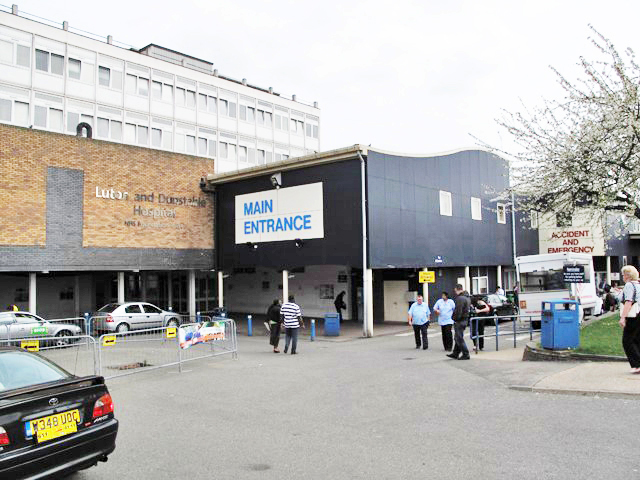
One recent example of the requirement for a fire system to be adaptable is the introduction of temporary structures such as COVID-19 testing pods on hospital sites. Whilst these structures are temporary it is still important to ensure the same high level of fire safety. This can be done very effectively using wireless detectors that can be added onto an existing system. For example, Apollo Fire Detectors’ wired systems can host a wireless interface module that communicates to the Apollo XPander wireless detection and alarm signalling. Full integration into Apollo loop allows for all wireless devices to be viewed on the panel as part of a wider detection system. Wireless detectors are ideal for temporary structures due to high flexibility, fast installation and the ability to be reused elsewhere in the building after the original structure has been taken down.
Case Study: Upgrading to a new system in a working hospital
The Luton and Dunstable University Hospital provided an example of how problematic and outdated fire systems can cause major issues with the site’s performance. The fire system previously in place had lots of agreed variation from the British Standards, was over 20 years old and was becoming unreliable with increasing probability of a major failure. The hospital was one of the worst performing sites according to Estates Return Information Collection (ERIC) with 36 false alarms resulting in fire and rescue service callouts.
The trust decided to act, by replacing all seven of the existing fire panels and loop devices but utilising the existing cabling where it was fit for purpose. The new Apollo, Open Protocol, system came with a 10-year warranty and is expected to last over 10 years. The replacement itself was done logically to reduce downtime while maintaining system integrity. The first step was to install a ring network around the whole site installing all the new advanced panels. The main panel was then connected to the switchboard and relayed between the existing and active panel, thus guaranteeing overall system integrity when having a split system. The contractor then worked in phases changing over one loop at a time, this one loop had an active fire watch during the changeover, again guaranteeing full system coverage at all stages. The new system was able to be fully programmed and zoned according to the fire safety officer’s needs and requirements.
The new system has many of the beneficial features described in this article that allow the system to be adaptable ensuring compliance and most importantly, inhabitants’ safety. Since the upgrade, the latest ERIC data shows only eight false alarms with fire service call outs in 2018, which is now one of the best performing acute hospitals of its size in the UK. Additionally, none of the false alarms at this site have been due to the system itself and are entirely down to manual call point (MCP) activations, which the trust is taking deliberate steps to reduce. Therefore, the system upgrade has eliminated false alarms from detectors. Disablements can be made on the system via a mobile app to easily account for HPV cleaning, as well as a stock of spare heat detectors are exchanged for smoke detectors when works are being carried out by contractors.
Private Finance Initiative (PFI) Buildings
The private finance initiative put large public sector infrastructure projects out to tender and private developers raised capital to construct the buildings and then leased the building back to the government. The lease arrangements are typically unbeneficial for the public sector with repayments being made over 20 to 30 years with a very high rate of interest.
There are currently 716 PFI or PF2 projects either under construction or in operation in the UK. 127 of these are health or social care projects. The total cost of the scheme to the NHS is £80bn by 2050. These buildings pose their own unique challenges in terms of management as many systems are kept separate from the NHS trust. The integration of systems is ideal to guarantee safety, and in the case of the fire detection system will likely improve the performance. In the case where there are two different fire systems, it is possible to interface them together to ensure complete protection and configure appropriate cause and effect. On top of this, having cloud hosted data for fire alarm systems is ideal, to monitor testing on one platform.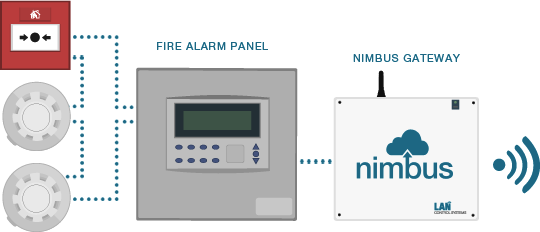
Evacuation and fire strategy
Due to the complex nature of hospitals, an evacuation strategy needs to be carefully considered. Progressive horizontal evacuation procedures are combined with phased vertical evacuation to ensure safety of patients and staff while minimising movement of dependent and high-dependency people. In order for this phased evacuation strategy to work it is important to have robust compartmentalisation throughout the building, combined with corresponding fire zoning of the detection system. Due to the ongoing evolution of a hospital site it is not uncommon that these fire zones over time will no longer correspond to the correct compartments. This is very dangerous as building occupiers could be given misinformation about when to evacuate. Easy to configure sounder grouping and any fire panels which support the most complex cause and effect such as the ones chosen in the Luton & Dunstable refurbishment are ideal.
System performance issues within specific environments
Hospital environments have unique challenges that affect the fire system and can put more stress on the system than a normal building function. Considering these challenges at the design stage will improve the overall performance of the system in terms of:
- Integrity of overall protection.
- Fewer false alarms.
- Lower maintenance cost.
- Improved overall longevity of the system.
The number one issue relating to fire detection systems in hospitals is false alarms. False alarms are defined as the activation of the fire detection and alarm system resulting from a cause other than fire. A false alarm becomes an Unwanted Fire Signal (UwFS) at the point the fire and rescue service is requested to attend. This is defined by the Healthcare Technical Memorandum 05-03 (HTM). The primary problem with false alarms within hospitals is the immediate risk of disruption to care. There are further issues associated with UwFS such as the waste of the fire and rescue service’s time. However, even more dangerous is that there is a prioritisation to attend fire signals from hospitals over other building types, meaning UwFS within hospitals can directly put other people’s lives at risk. As a building type, hospitals are responsible for the highest number of false alarms in the UK.
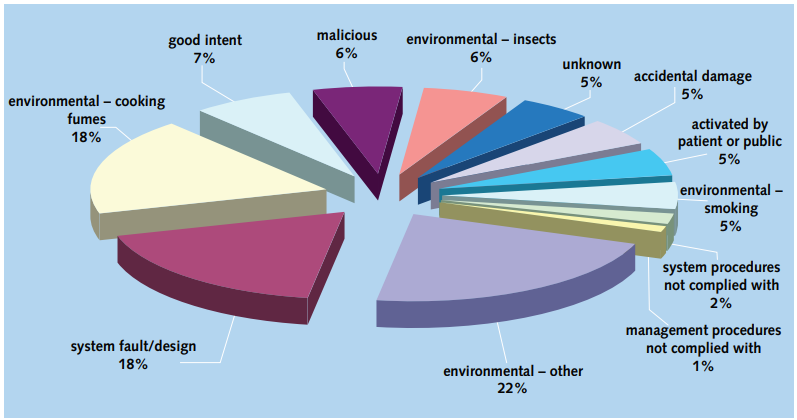
False alarms
The single largest reason for false alarms in hospitals, is due to the system itself. This is directly related to the typical age of the fire detection system but also poor original system design. Advanced detectors have in-built drift compensation; this feature adjusts the alarm threshold as dirt build-up increases. This allows them to function within EN 54 standards for a longer time before needing replacement/ maintenance due to going into false alarm. Another benefit of more advanced detectors is the application of multiple modes. These provide a variation in sensitivity to better detect relevant smoke particles and help reject transient signals. Improved detector casing design can also significantly reduce insect ingress within the detectors. These advancements further aid in the quest of ever reducing the UwFS and maintenance costs. The Apollo Soteria range of detectors encompasses all of these beneficial features to reduce false alarms.
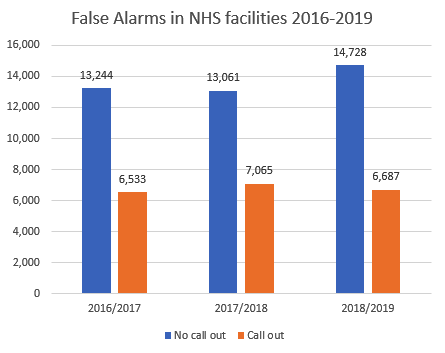
While it is impossible to completely eliminate all false alarms, there are considerations to minimise almost all other causes of false alarms as well as detector faults. An example of this is the issue of cooking fumes. In hospitals this is frequently reported to be mainly burning toast in the maternity ward setting off the smoke detector. Consideration on the type of toaster itself is actually important to prevent forgotten toast from burning or getting caught within the device. Combining this with heat detectors or a multisensor with different modes of sensitivity can minimise false alarms from cooking fumes. Strict management of only using approved types of toasters as well as removing any other unproven cooking devices that staff may bring in, can effectively reduce false alarms due to cooking fumes within hospitals.
Another cause of false alarms is manual call point (MCP) activation. Often this isn’t malicious and is accidental, one obvious cause is the similarity in appearance of an MCP and the door release button with the only difference being colour. One of the easiest ways of preventing this is by installing a hinged protective cover over the fire alarm MCP. This will not only prevent the call MCP from misuse, but also aid in the prevention of accidentally activating the MCP if hit by a trolley or bed. This has been proven to be effective and as such in the latest version of BS5839 Pt1:2017, it is recommended that all MCPs be fitted with this cover.
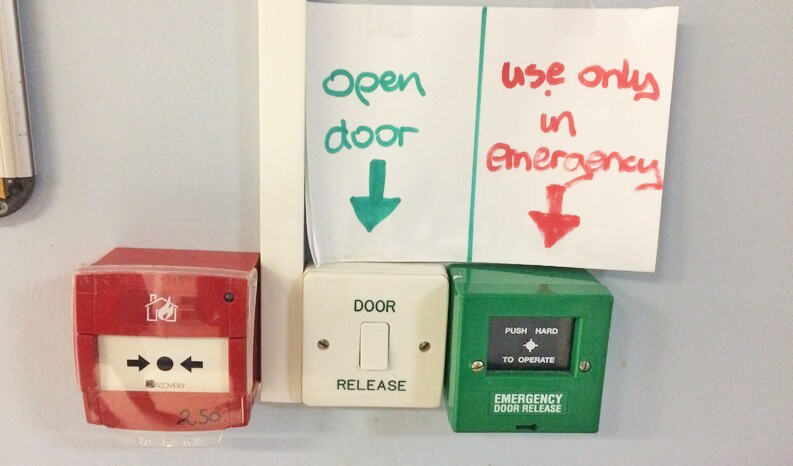
Additionally, whilst this may cause additional costs, reducing the MCP protrusion on the wall, by recessing it to the regulatory limits may also reduce accidental damage to the device by high traffic flow in the corridors.
Having clear testing procedures is essential to reducing unwanted alarms, ensuring staff know how to reset an MCP and the system is vital. Communicating with the appropriate response centres when undergoing maintenance/ alarm testing prevents UwFS and wasting the fire and rescue service’s time.
Deep Cleaning – HPV Fogging/ COVID 19 Nebulising Spray
One unique challenge of the hospital environment for the fire detection system is the use of Hydrogen Peroxide Vapour (HPV). This type of cleaning fog is used to completely sterilise a room after each infectious patient or infectious substance that might have contaminated the area. The issue arises because the fog itself is similar in consistency to smoke and therefore often activates optical smoke detectors. Therefore, it is best practice to disable the detector and cover it to prevent false alarms from this procedure. Some systems will allow disablements to be made easily and even via a mobile app, minimising this problem. However, on some older systems disabling detectors can be dangerous as recording which detectors have been disabled for fogging is only recorded in a physical logbook and it is not visible on the control panel. Forgotten disablements will reduce overall system integrity and pose an immediate risk to life. A minor improvement that can also be made to make covering detectors quicker is to recess the cabling to the detector so that any cover can get a full seal without the additional setup of taping around the wiring.
As well as HPV deep cleaning, many sites have recently encountered a similar problem associated with paracetamol spray given off from ventilators which are treating COVID-19 patients. Adjusting affected detectors modes of sensitivity can alleviate some of this problem instantly. If the problem persists undertaking a full risk assessment and increasing (human) monitoring may justify contradicting BS5839 Pt 1 2017, and temporarily replacing smoke with heat detectors in these areas.
Contingency Wards
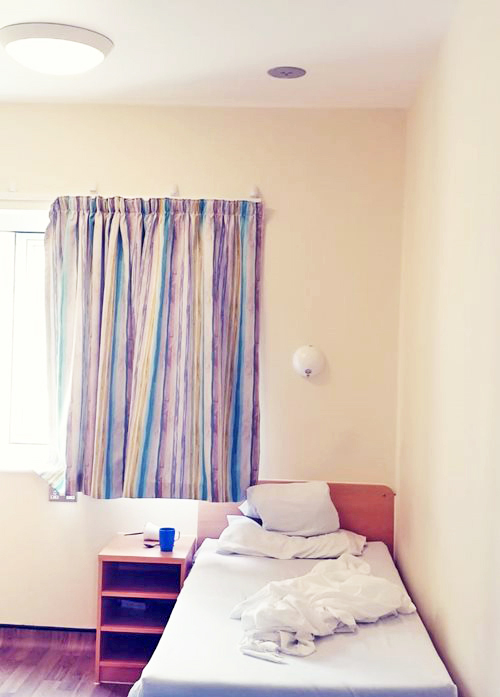 There has been a recent push in the NHS to increase the number of contingency wards in hospitals. Converting live hospital wards to become anti-ligature is extremely challenging as the works have to be thorough, replacing bathroom facilities as well as all doors, lights, ironmongery, radiator covers, decorations and some flooring. Replacing the fire detector for an approved anti-ligature alternative should be easy but depends on backwards compatibility and having an adaptive system. Adding additional detectors to an existing loop and being able to address the new detectors to be discovered by the panel quickly is ideal.
There has been a recent push in the NHS to increase the number of contingency wards in hospitals. Converting live hospital wards to become anti-ligature is extremely challenging as the works have to be thorough, replacing bathroom facilities as well as all doors, lights, ironmongery, radiator covers, decorations and some flooring. Replacing the fire detector for an approved anti-ligature alternative should be easy but depends on backwards compatibility and having an adaptive system. Adding additional detectors to an existing loop and being able to address the new detectors to be discovered by the panel quickly is ideal.
The current use of load release anti-ligature detectors, while approved, these still pose a significant risk as the detector itself could be used to cause harm to the patient or others. As well as this, once the detector is load released it is no longer operational and will cause a lapse in system integrity.
There is an innovative alternative to the load release anti-ligature detector which solves this issue. An approved flush mounted, anti-ligature, anti-vandal detector which cannot be removed from the ceiling due to anti-tamper screws. Apollo’s Soteria Dimension Specialist Optical detector completely removes the risk to the patient and staff and will ensure fire system integrity. This detector is also fully backwards compatible and can be added to any existing system from the same manufacturer.
Conclusion
There is an array of challenges of managing a fire detection system in a hospital, which without consideration can lead to high costs to maintain but more importantly a lapse in overall protection for vulnerable people. This article has outlined several challenges and recommendations to improve system performance and minimise cost such as:
- Having an open protocol system to reduce total cost of ownership of the system.
- Install detectors with in-built drift compensation which have a longer lifecycle.
- Place covers over MCPs and consider recessing into the wall to the regulatory limit.
- Exchanging smoke for heat detectors temporarily in areas which there is building work.
However, there are many more issues which will be important to consider. For more detail on any feature or benefit of a fire system within a hospital outlined in this article or alternatively to discuss other difficulties not mentioned, get in touch with us at Apollo.
Contributors:
Harry Buck – Apollo Fire Detectors Irina Cruse – Apollo Fire Detectors
SalvyVittozzi – Apollo Fire Detectors
Jeff Cutler – Apollo Fire Detectors
With special thanks to:
Steve Manuel – Fire Officer Luton& Dunstable Hospital
William Espiner – Aylesbury Fire Systems
![]()